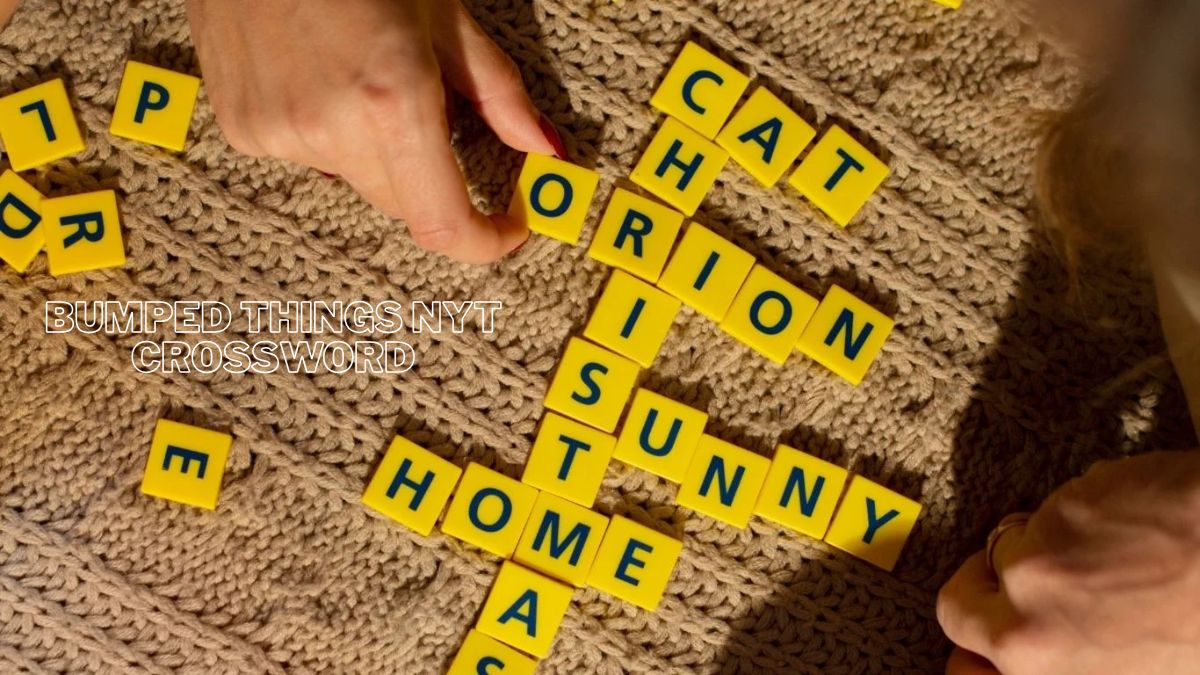Crossword enthusiasts know that the New York Times Crossword Puzzle is much more than a fun pastime—it’s a mental workout, a daily ritual, and sometimes, a beautifully frustrating conundrum. Among its many themes, the “Bumped Things” trend is among the most intriguing and challenging. If you’ve stared at your grid, wondering why seemingly simple answers won’t quite align, you’re not alone.
But don’t fret! This comprehensive guide dives into the history of this peculiar crossword trend, breaks down what makes “Bumped Things” so fascinating, and offers you expert tips and tricks to crack the code. By the end, you’ll understand this crossword conundrum and sharpen your skills to tackle your next NYT puzzle like a pro.
A Quick History of the Bumped Things Nyt Crossword
The New York Times Crossword debuted in 1942, thanks to Eugene T. Maleska, passionate about clever wordplay and crafting engaging puzzles. Over the years, it grew into a cultural institution, enjoyed by beginners and crossword aficionados.
Themes became a hallmark of the puzzle, bringing unique challenges to players. Among the most iconic are “Sunday Themes,” rebus-filled grids, and quirky trends like “Bumped Things.”
Players engage not just for fun but for “aha!” moments when a seemingly impenetrable clue finally makes sense. The “Bumped Things” theme is a testament to this spirit, pulling solvers into a riddle of shifted letters and clever wordplay.
What Are Bumped Things in the NYT Crossword?
“Bumped Things” refers to a category of crossword answers where letters are unexpectedly “bumped” (shifted, omitted, or altered). These quirky clues demand the solver to think outside the box. They may include puns, altered spellings, or unusual formatting that doesn’t fit neatly in standard fill-in-the-grid logic.
For example, a clue like “Flight obstacle” might point to the answer BIRD (bumped) Or perhaps a creative, intentional shift like FLI GHT split across two slots.
These puzzles reward solvers who are patient and adept at identifying word patterns and unexpected twists in logic.
Why “Bumped Things” Puzzles Captivate Solvers
- Challenge: The irregularity of bumped answers makes the puzzle feel unpredictable, doubly challenging for those used to standard grids.
- Creativity: The slight deviations encourage lateral thinking, pushing solvers to reimagine how clues and answers interrelate.
- Satisfaction: The moment you deduce the logic behind a bumped answer delivers an immense sense of accomplishment.
For NYT Crossword veteran solvers, “Bumped Things” reaffirms the joy of discovery. For newcomers, it’s a fresh initiation into the magic of word puzzles.
5 Expert Tips for Tackling Bumped Things in the NYT Crossword
Solving “Bumped Things” might seem impossible at first glance, but you’ll be breezing through the grid quickly with the right strategies.
1. Master the Clues
Crossword writers love wordplay and puns. Carefully analyse each clue for unusual phrasing. When a clue seems straightforward but doesn’t fit the grid properly, it might signal a “bumped” solution.
- Example clue: “Something knocked over”
- Possible answer:
VASE(bumpedVmoving into another box.
- Possible answer:
Always ask yourself, “What’s the pun or hidden idea behind this clue?”
2. Identify Patterns
The NYT Crosswords often rely on specific recurring patterns. Knowing abbreviations, symbols, or slang shortcuts frequently used can be a huge timesaver.
- For example, abbr is commonly used, so answers like EST,” east, or REP, Representatives often pop up in tricky clues.
Familiarity with patterns in “bumped” grids adds another layer of insight.
3. Work Backwards
If a particular answer stumps you, focus on intersecting clues in the grid. Solving a crossing clue often reveals key letters in the tricky answer and sparks an idea.
Leave the stiff sections blank for now and return after filling in other parts of the grid.
4. Puzzle Tools Are Your Friend
While solving on paper adds a nostalgic charm, using a pencil makes trial-and-error much easier. Erasing guesses eliminates grid confusion.
For digital solvers, online tools like a thesaurus, dictionary, or anagram solver can offer quick inspiration for obscure clues.
5. Practice Patience and Perseverance
Remember, “Bumped Things” crosswords are challenging for even the best solvers. Take breaks, revisit clues, and give your brain some breathing room—the joy of solving lies in the process.
How to Improve Your Overall Crossword Skills
If “Bumped Things” has hooked you, why stop there? Sharpen your overall crossword-solving skills to level up your game.
- Daily Coffee and Clues: Commit to solving one small puzzle daily to build momentum.
- Study Past Puzzles: Familiarise yourself with previous NYT grids featuring “Bumped Things” for practical experience.
- Join Crossword Communities: Engage with fellow enthusiasts on forums or social media. Sharing techniques, discussing clues, and celebrating wins foster learning and camaraderie.
Keeping an Eye on the Future of Crossword Themes
With the rising popularity of unique themes like “Bumped Things,” it’s clear that crossword creators are continuing to innovate. Solvers can look forward to clever twists, enhanced wordplay, and new challenges in upcoming editions of the NYT Crossword.
Whether you’re a seasoned veteran or a curious newcomer, these themes offer an engaging way to step up your puzzle-solving game while savouring the magic of words.
Become an Expert Solver
The “Bumped Things NYT Crossword” isn’t just a puzzle; it’s a delicious, mind-bending challenge for word lovers everywhere. Mastering these tips can turn frustration into triumph and make even the trickiest grids your playground.
Struggling with a specific clue? Share your experience in the comments below, or connect with fellow enthusiasts to uncover the joys of solving crosswords together.

